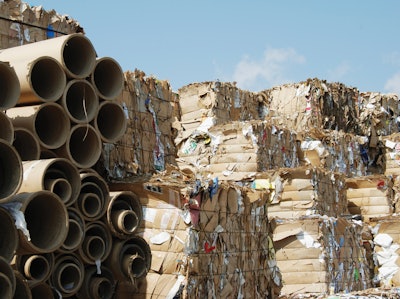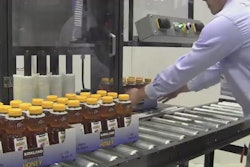
Nearly 90% of the U.S. population has access to paper recycling services, and more than 65% of all paper that is consumed is recovered. In accordance with the Sustainable Packaging Coalition’s (SPC) Definition of Sustainable Packaging (see www.bit.ly/pwe00427), it is essential to optimize the use of renewable or recycled source materials in package design, to help ensure sustainable management flows by encouraging waste reduction and resource conservation. Utilizing recycled-paper content can have a number of environmental benefits, such as landfill diversion, energy savings, and resource conservation, while still meeting the performance criteria required by many packaging manufacturers.
There are tremendous opportunities to increase and utilize recycled-paper content in packaging, but we need to be aware of products entering the recycling stream. By designing products from the start with sustainability and their full life-cycle impacts in mind, they can be made in a way that facilitates effective reprocessing, ultimately allowing them to become source materials for new products. The SPC, through its systems-based approach, is working toward engaging stakeholders throughout the supply chain in an attempt to make such efforts common practice.
However, this remains a work in progress, and there have been, and will continue to be, bumps along the way. In early 2011, a number of technical reports and media stories questioned the quality of recycled paperboard; in particular, concerns were raised over potential packaging migrants. The possible migrants were identified as mineral oil hydrocarbons (MOH), with their primary source being traced back to inks used in newsprint entering the European recycling stream. The researchers engaged in these studies found that petroleum-based inks used in European newsprint could potentially migrate from the recycled content into some food products, with a high degree of variability between products. The concerns focused on the high levels of uncertainty around MOH’s potential impacts on the human body and their potential to migrate from such packaging into foods.
MOH refers to an extensive range of quality grades, and while some are deemed safe for use, others are known to be hazardous. It is important to note that the increasing use of soy-based inks in North America is helping to eliminate some of these concerns.
While startling at first, it became clear in studying this topic that the research around MOH migrants is scarce, and as a result, uncertainties and skepticism around testing methodologies and associated risks remain. In June, the European Food Safety Authority Panel on Contaminants in the Food Chain (CONTAM) released an official “Scientific Opinion on Mineral Oil Hydrocarbons in Food” (see www.bit.ly/pwe00428) in response to many of the reports and press releases previously mentioned. The opinion was intended to assess the risks related to MOH occurrences in food and draw on that information to determine the need for possible regulatory measures. The opinion provides a comprehensive overview of the subject with an emphasis on exposure levels in Europe. In general, the panel was able to identify a number of potential contamination sources, though data and resource limitations prevented the panel from drawing firm conclusions on the associated risk. In the end, the panel deemed it inappropriate to establish health-based guidance for MOH exposure at this time.
























